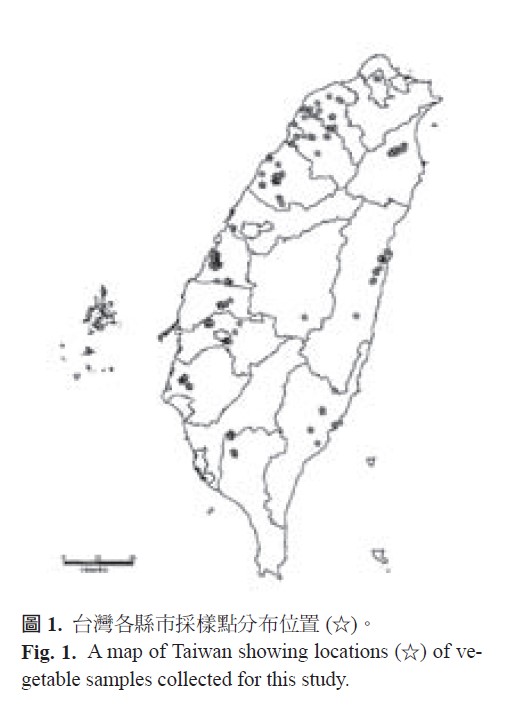All issues
Author:Yu-Wen Lin, Tsang-Shen Liu*, Chi-Tsun Chen, Hsueh-Jung Tang, Hong-Tang Chen, Jia-Rong Job, Jeng-Hsien Tsai, Yong-Hong Lin, Chi-Chung Chang, Shwu-Jene Tsai, and Wei-Tin Huang
Abstract:
In order to understand contents of cadmium and lead in vegetable crops produced in Taiwan, a to-tal of 1900 samples of vegetable crops were collected from major vegetable growing areas in Taiwan and used in this study. These samples were digested by concentrated nitric acid and perchloric acid and then analyzed for contents of cadmium and lead, using inductively coupled plasma atomic emis-sion spectrometer. Results showed that mean concentrations of cadmium (fresh weight basis) were ND-0.151 mg kg-1 in leaf vegetables, ND-0.080 mg kg-1 in head vegetables, ND-0.116 mg kg-1 in root/stem vegetables, and ND-0.115 mg kg-1 in gourd/fruit vegetables, whereas mean concentrations of lead were ND-0.294 mg kg-1 in leaf vegetables, ND-0.239 mg kg-1 in head vegetables, ND-0.619 mg kg-1 in root/stem vegetables, and ND-0.064 mg kg-1 in gourd/fruit vegetables. Results also showed that 0.6% and 0.7% of vegetable samples exceeded the food regulation levels for cadmium and lead in Taiwan, respectively. We particularly emphasized that 6.1%, 9.8%, and 0.6% of cabbage, iceberg lettuce, and carrot samples exceeded the regulation levels for cadmium, respectively, while 0.3% and 4.0% of rad-ish and carrot samples exceeded those for lead, respectively.
Key words:Cadmium, Lead, Vegetable crops, Food safety
Download:![]() PDF Links
PDF Links
- 1. Development of Tractor-Mounted Seedling Transplanter for Sweet Potato
- 2. Synergistic Effect of Additional Gas on the Toxicity of Phosphine to Sitophilus oryzae and Sitophilus zeamais (Coleoptera: Dryophthoridae)
- 3. Effects of Temperature and Solar Radiation on Growth Traits and Plant Elements in Purple Leafy Sweet Potato

 Submit your manuscript
Submit your manuscript
 Guide for authors
Guide for authors